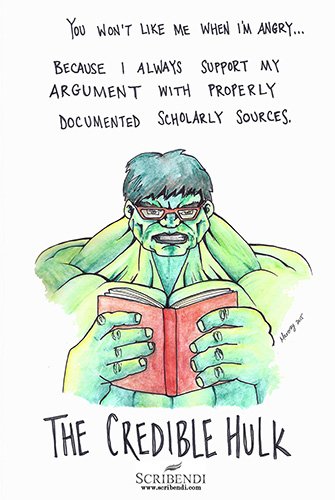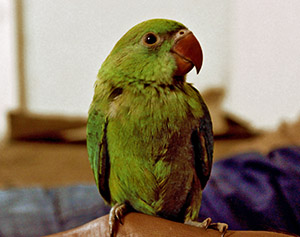Remember that paper you slaved over for two coffee-fueled nights? The agonizing hours of research spent in the dank, concrete library archives? The fragments of your soul that filled the spaces between each meticulously typed line?
 How destructive to your fragile academic morale would it be, then, if your work was returned ungraded, because you didn't check for plagiarism?
How destructive to your fragile academic morale would it be, then, if your work was returned ungraded, because you didn't check for plagiarism?
In truth, this picture is a mild version of the consequences you'll face should you be found guilty of plagiarism in an academic setting. Real repercussions could involve a failing grade, recorded removal from the class, academic probation, or even expulsion from the institution. Plagiarism really is that serious, so make sure you are fully informed about what constitutes rule breaking and how you can guarantee your academic transparency.
So, how can you check for plagiarism? Be aware of the following situations.
Type 1: The Direct Copy
We hope most will know not to do this: directly lifting a segment of text (be it a phrase, a paragraph, or an entire paper) word for word, without citation, as if it were your own. Don't assume that a line copied from an obscure webpage is untraceable among the 4.5 billion pages on the World Wide Web, either. Most academic institutions require an electronic copy of all submissions, so that they can scan them for stolen content.
Solution: Introduce the source, enclose the quoted text in quotation marks, and include an in-text citation.
Type 2: The Minimalist
You change a few words or phrases from a piece of source material, but the original tone, structure, and content remain the same. Bad news, friend: paraphrasing does not original writing make.
Solution: Introduce the source and summarize the content in question in your own words, followed by an in-text citation.
Type 3: The Combo
Usually the product of laziness (or of the assumption that your instructor won't notice), this occurs when some pieces of information are properly cited but others are not. Some students guess whether information should be cited or assume that a conclusion they thought of independently should not have to be credited, even if they later read the same idea in a source.
Solution: As a general rule, all information that is not common knowledge should be cited.
Type 4: The Quilt
This consists of information from several different sources combined under one blanket citation. In such cases, you are essentially stealing information from multiple people and giving the credit to one false party. You may not be plagiarizing in the sense that the information is claimed as yours, but you are still giving the credit to the wrong source.
Solution: Individually cite all contributing sources. Depending on the structure of the presented information, this could be done via individual parentheses or footnotes, or by a cumulative citation at the end of the affected text.
Type 5: The Parrot
 This will trip up many an aspiring scholar; it involves copying the structure and evolution of thought from an existing source. This form is not about the writing itself; you could compose an entire paper in your own words and still be caught for plagiarism, because you have essentially stolen the thought process and argument of another author rather than formulating your own through the cumulative study of multiple sources.
This will trip up many an aspiring scholar; it involves copying the structure and evolution of thought from an existing source. This form is not about the writing itself; you could compose an entire paper in your own words and still be caught for plagiarism, because you have essentially stolen the thought process and argument of another author rather than formulating your own through the cumulative study of multiple sources.
Solution: Compile your own research and form your own conclusions. In other words, bite the bullet and do the work, son.
Type 6: The Insecure
I like to call this the Little Mermaid Complex; you give up your own voice in an attempt to please. In direct terms, this occurs when a paper is fully stocked with sourced material but contains little to no original content. Perhaps not explicitly "plagiarism" per se, this kind of error will nevertheless result in a poor grade.
Solution: Remember that your professors want to know your thoughts and ideas (backed up, of course, by authoritative evidence from others). Allow yourself the time to give some real thought to your essay, and have the confidence to rely on your own opinions.
Type 7: The Lost-at-Sea
Your professor has requested a minimum of 25 sources, but you've used only 18. So you quietly boost your Works Cited with books and articles you haven't actually read or ones that you did but found inapplicable. No one's going to check these, right? You might luck out and get away with it. You might not. Either way, referencing a non-existent or mismatched source counts as plagiarism.
Solution: Plain and simple, only include accurate citations. This applies to URLs as well; if it's out of date or no longer available online, your grade could suffer for it.
Type 8: The Self-Obsessed
Your own work is yours to use however you please, right? Not in the world of academia. It may be that a paper you wrote in your second year applies seamlessly to your fourth-year seminar with a new professor. Great. Learn from it and write a new paper. It shouldn't be a surprise that your professors expect you to complete original work for each class; it may shock you, however, to learn that handing in the same paper twice, or even excerpts from work you did for another class, counts as self-plagiarism.
Solution: Cite your previous work the way you would all other sources.
The golden rule of avoiding plagiarism? When in doubt, cite your source. Perhaps even more important, make sure you know what style guide your professor expects and follow it.
Image sources: Wilfred Iven/Stocksnap.io, Nabeel Syed/Stocksnap.io











